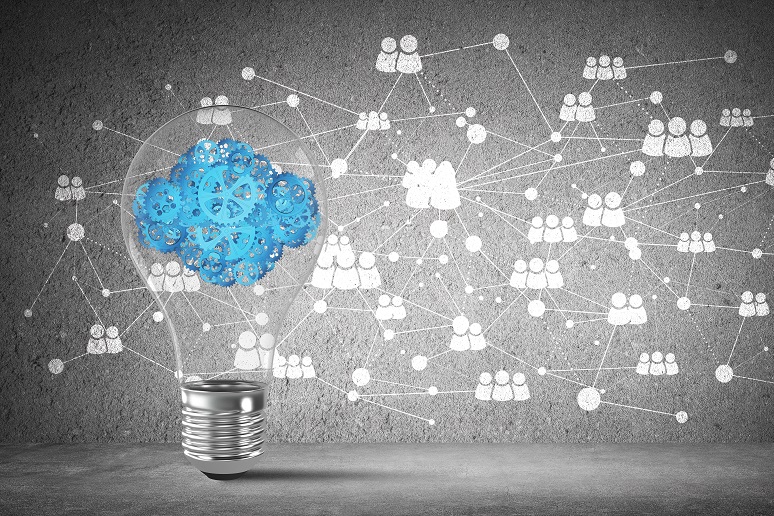Do you ever feel like you are drowning in interruptions — digital nudges from email, texts, messages, and apps that intrude throughout the day and make finding the time simply to “think” near impossible? Do you feel yourself hungering for that feeling of clear mental space, of creative, productive, uninterrupted “flow?”
You’re not alone. According to
2019 data from RescueTime, which provides automatic time, website, and app tracking, the average employee can’t go six minutes without checking email or IM and 40% of workers never get more than 30 minutes straight of focused time in a workday due to the constant interruption from multiple communication tools. As a result, knowledge workers are spending just 2.8 hours per day on productive tasks.
While today’s collaboration tools, platforms, and applications are intended to boost productivity, too often many end up causing interruptions. Yet, in our 21st century knowledge-driven economy, people’s attention and uninterrupted creative brainpower are our organizations’ most valuable assets!
One of the biggest challenges facing enterprises today is learning how to adapt and reshape the landscape of our digital workplaces to reduce interruptions and boost the number of “think hours” that workers can experience each day. Too often, we end up prioritizing urgent work over the work that drives outsized impact. “Think hours” give us clarity around what is urgent vs. what is important so we can spend our time intentionally.
Here are some best practices and strategies that your organization can adopt to improve collaboration.
Seamless Interoperability of Digital Workplaces
It’s become common for workers to have access to multiple collaboration tools and productivity platforms, each of which has its own specific work purpose and benefits. But one underrated challenge of this way of working is the mental switching that comes from opening, closing, navigating, and accessing information and tools within the various technology applications on a screen.
When switching among applications, workers must constantly redirect their attention and reengage with different menus, frameworks, and formats. This can cause a surprisingly costly series of mental interruptions and delays. According to the
Mavenlink State of the Services Economy 2019 report, 73% of employees say that they spend more than one hour per day navigating between apps. Let’s give them that time back.
The solution: We need better digital workplaces that enable seamless interoperability between applications and technology tools. The game-changing productivity platforms of tomorrow will do a better job of integrating and creating easy access between apps, so that workers can access everything they need seamlessly.
Cognitive Collaboration Solutions
Imagine if your collaboration tools could anticipate a worker’s needs, employ reasoning, remember outcomes, and take proactive actions? If they could seamlessly surface and present them with contextually-relevant information, relationship intelligence, and business insights, while they worked?
That’s the future of collaboration: intelligence and context slipstreamed in without the user needing to lift a finger. Cognitive collaboration will become the foundation to deliver massively personalized experiences and help transform how we work.
Bringing artificial intelligence (AI) and machine learning capabilities together with insight and context from meetings and interactions creates more meaningful experiences and enables positive outcomes. Cognitive collaboration will foster human relationships, enhance customer interactions, and enable high-performance teams to work across boundaries by enabling smarter and faster decisions.
As more and more tedious activities get handed over to AI, more time and resources are made available for people to uplevel and better leverage their intelligence, creativity, and relationships.
Instead of interrupting us, our collaboration tools will get smarter at meeting our minds exactly when and where we need them.
Cultural Shifts for Better Collaboration
Perhaps the biggest change that needs to happen is the most complex of all, and it goes beyond tools and technology. Our leadership cultures need to go through a transformative shift in how we understand and evaluate productivity and time management.
For example, more managers need to realize the true time-cost of a meeting. If you have five people in a room for an hour, that’s not a “one-hour meeting,” that’s a FIVE-hour meeting. What is the opportunity cost of five hours of your team’s time? How much productivity and value-generating activity did your team forego in order to have that five-hour meeting? Was it worth it? What if you could skip it and just get the action items afterwards?
With time and talent in shorter supply than ever before, managers need to think more expansively about how to measure productivity. Are you rewarding your people based on “time spent at the office” or by results?
The future of collaboration is going to be all about focus: helping your team maximize “think hours” by minimizing interruptions. Time is money, and collectively as organizations and as professionals, our time is growing more precious and valuable with each passing day. One of the most important new metrics for how enterprises can be agile and effective is by evaluating how effective they are at helping people stay in a state of constructive, creative flow.










